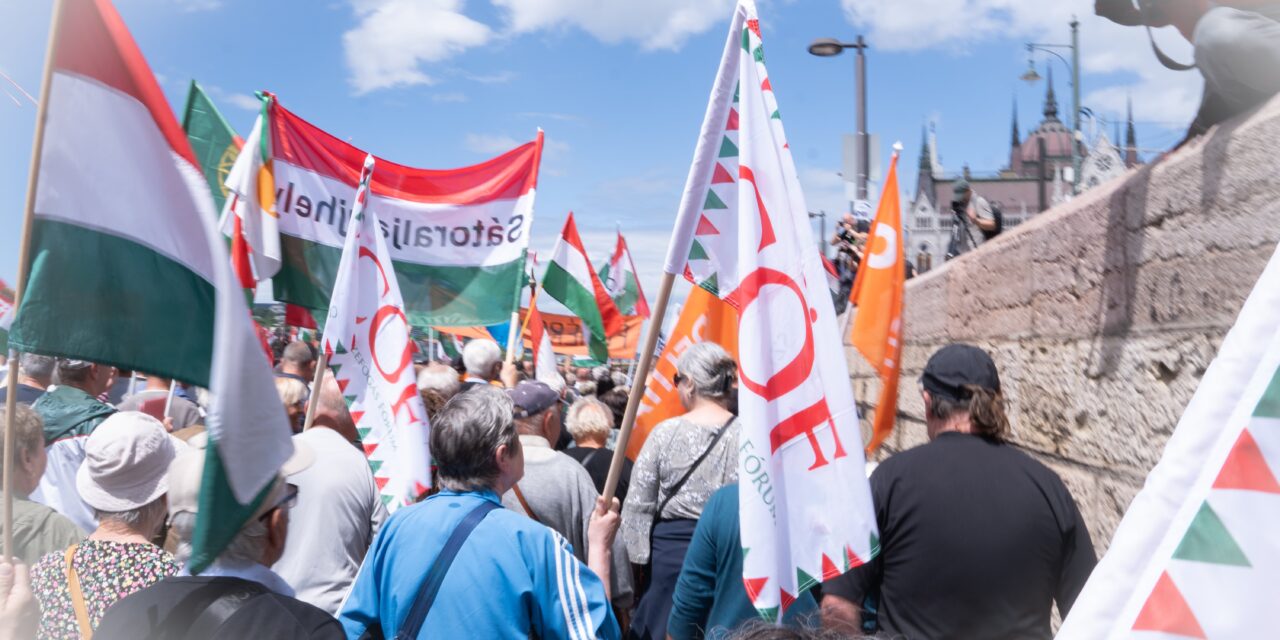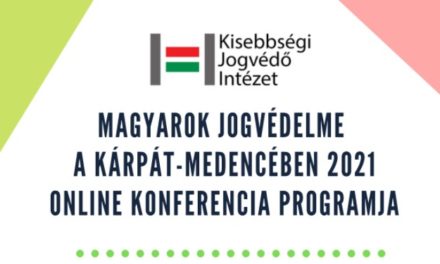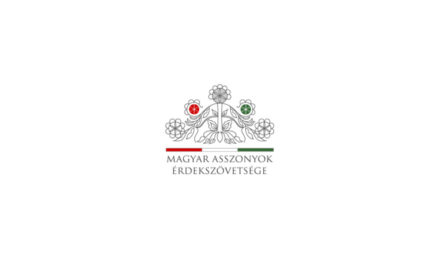The domestic and foreign progressive press suffers from selective blindness, and for some strange reason saw only a few thousand people at Europe's biggest pro-peace event - but one doesn't expect much from them. Let's see what the scientific methods say.
It is common practice that after mass events the organizers and the opposing camp start to guess the number of participants, but who should be believed? At a concert, one has a simple task. Based on the sold tickets and seats, we can get an exact number, but the situation is different in the case of a Peace Procession. In such cases, it is worthwhile to use the Internet and modern technology.
We still don't get an exact number, but in the case of, for example, a crowd of half a million, +/- 10,000 people may not even really matter.
It is difficult to tell exactly how big the crowd is from the middle of a mass event. Aerial photography is good for that. Péter Szijjártó published such a recording on his Facebook page yesterday:
Of course, this does not reveal how big the Saturday Peace March was, but the beginning of the march is already on the Magit Bridge (where a huge crowd was already waiting), and the end of the line cannot be seen yet. An amateur recording of the scene was also made by a foreign YouTuber, Ignaz Bearth:
We still don't get an exact number, but here you can already feel how big the crowd was.
How many people did the opposition see? Simple: little.
The domestic and foreign progressive press continues to suffer from selective blindness, and for some strange reason only saw a few thousand people, but one doesn't expect much from them. One of Europe's largest news agencies, Reuters, for example, published its article about the Peace March with the title "Several thousand people demonstrated in support of Orbán before the EU vote."
Even "thousands" is not right, but it is also telling that the pro-peace nature of the demonstration is not even mentioned in the title.
Of course, it is also telling that the opposition news portals, which used to be so loud, somehow did not start a wild war of numbers. After Péter Magyar's events, they almost outbid each other, throwing around hundreds of thousands of numbers and scientific measurement methods, but now they are somehow silent... and this is the most telling.
Except for the People's Voice. They were not told that it would be better to remain silent now. Before the march, they were already happy that Széchényi tér was not full, that the Peace March would be an ugly failure.
Now let's see the numbers closest to the real data.
A mapchecking.com can give you a relatively real picture of the size of the crowd. Pesti Srácok calculated a ratio of 4 people/m2, but the author points out: it is worth pointing out that this number is always higher in the inner layers, close to the stage, and lower on the periphery.
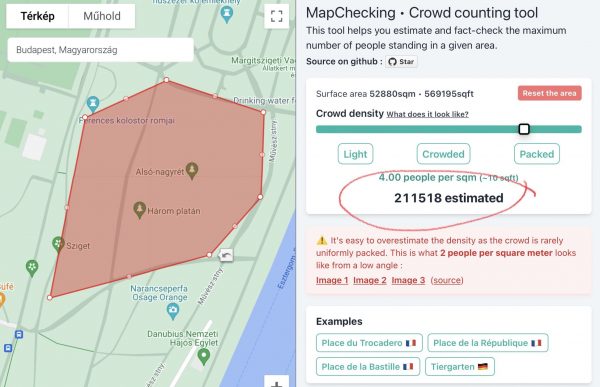
The crowd at the Peace Procession on Alsó Nagyrét
Source: Pesti Srácok
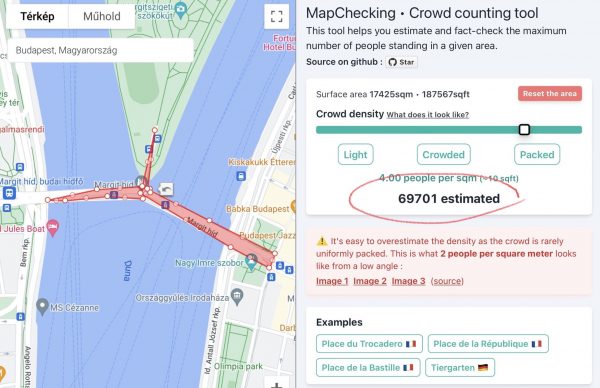
The crowd on the Mrgit bridge
Source: Pesti Srácok
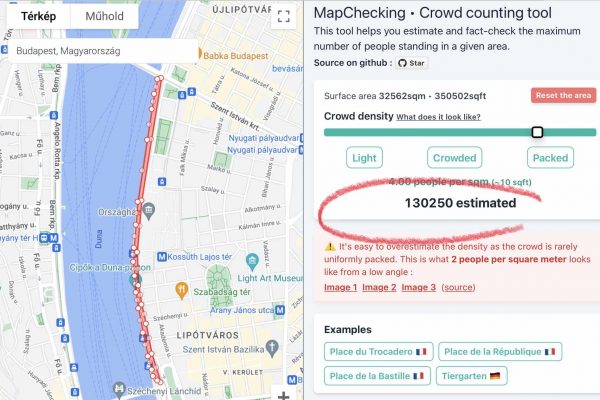
The crowd on the wharf
Source: Guys from Pest
It is not a complicated operation to calculate that ONLY based on the above measurements, 411,000 people come out, but it is not at all excluded that the real number is somewhat higher than this. We can generously say that the number was somewhere between 420,000 and 500,000 (based on these measurements).
Regardless, Hungary's critics can rightly claim that Russia and Ukraine are not yet making peace because of a Peace March... and they are right.
Peace will only come if the parties lay down their arms, sit down at the negotiating table, and the West no longer pours oil on the fire and feeds the war machine.
Europe neither wants nor can win another world war, but it is influential enough to bring peace negotiations under the roof. Instead of transporting weapons and serving the interests of the American arms industry, we should work on this.

